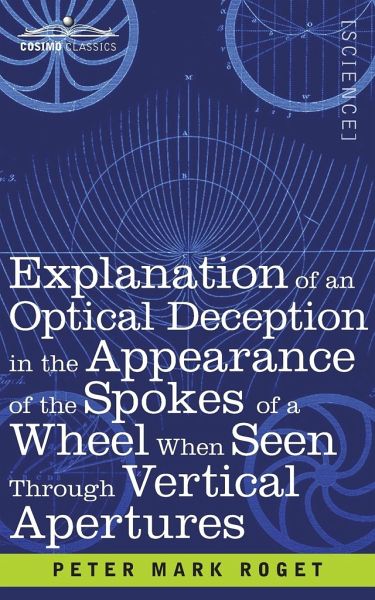
Explanation of an Optical Deception in the Appearance of the Spokes of a Wheel when seen through Vertical Apertures
Versandkostenfrei!
Versandfertig in über 4 Wochen
8,49 €
inkl. MwSt.

PAYBACK Punkte
4 °P sammeln!
"A curious optical deception takes place when a carriage wheel, rolling along the ground, is viewed through the intervals of a series of vertical bars." -Peter Mark Roget, Explanation of an Optical Deception (1825) Explanation of an Optical Deception in the Appearance of the Spokes of a Wheel When Seen Through Vertical Apertures (1825) describes the research of Peter Mark Roget, a pioneer in identifying phenomena that advanced the invention of filmmaking. Here, Roget wrote about his studies and his observations of how light is transmitted, based initially on looking at the world through a seri...
"A curious optical deception takes place when a carriage wheel, rolling along the ground, is viewed through the intervals of a series of vertical bars." -Peter Mark Roget, Explanation of an Optical Deception (1825) Explanation of an Optical Deception in the Appearance of the Spokes of a Wheel When Seen Through Vertical Apertures (1825) describes the research of Peter Mark Roget, a pioneer in identifying phenomena that advanced the invention of filmmaking. Here, Roget wrote about his studies and his observations of how light is transmitted, based initially on looking at the world through a series of slits such as a vertical Venetian blind or palisade. Roget's work showed that an image persists in human perception for about one-sixteenth of a second, introducing one of the primary principles on which animation, film, and television are based.












![Olfactics and the Physical Senses [electronic Resource] Cover Olfactics and the Physical Senses [electronic Resource]](https://bilder.buecher.de/produkte/66/66198/66198256n.jpg)